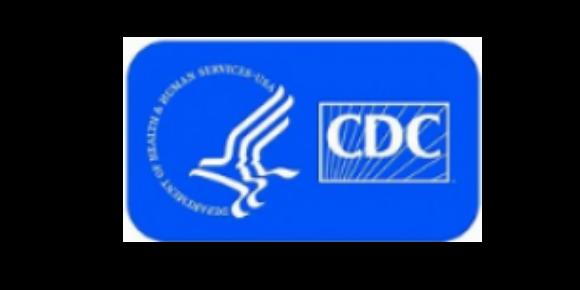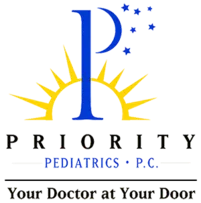
March 3, 2020, Update from CDC Telebriefing Update on COVID-19 (Coronavirus) from Dr. Nancy Messonnier
Good afternoon and thank you all for joining us. Over the weekend, multiple states announced new presumptive positive cases of COVID-19. As of Monday evening, there were 60 cases that includes presumptive positives or CDC-confirmed positive cases of COVID-19 detected through the U.S. public health system. This does not include people repatriated on U.S. State Department flights. 22 of the 60 cases are travel associated. 11 are likely person to person and 27 are under investigation, which means that state and local public health officials are still investigating how these people were infected.
Many states are now testing and reporting their own results. While these results will be confirmed at CDC, the state and local health departments are taking public health actions based on these presumptive positives. And CDC is counting these as cases.
We would be updating our online case count on weekdays by noon. I just want to mention that we are no longer reporting the number of PUIs or patients under investigation nor those who have tested negative. With more and more testing done at states, these numbers would not be representative of the testing being done nationally. States are reporting results quickly and even — states are reporting results quickly and in the event of a discrepancy between CDC and state case counts, the state case counts should always be considered more up to date. Developments since I last spoke to you have heightened our concern for certain communities in the U.S.
We have seen more reports come in from what is likely an outbreak in a long-term care facility in Washington state. Sadly, now we have six deaths reported to CDC. We have seen the first reports from Florida, Georgia, Rhode Island and New Hampshire state. We expect to continue to find more cases. These will probably result from a mixture of instances of travel-related, contact-related and community-associated cases where we don’t immediately know where people became exposed. Right now, we have 12 states that have reported cases of COVID-19. Many of these have occurred within the past 14 days. Meaning that we may still find contacts of cases in those states who test positive for COVID-19.
The greatest risk of infection is among those who are in close contact with people who have COVID-19. This includes family members and health care workers who care for people who are infected. Right now, with still aggressive containment measures being taken to find and isolate cases in order to prevent spread, we want anyone with suspected exposure to someone with COVID-19 to reach out to their health care provider. You should do that by phone. There may come a day when we’re only looking for severe illness, but we’re trying to understand how the virus behaves and prevent additional spread. I talked about risk of infection.
Now I would like to make a comment about the risk for serious outcomes. While information so far suggests that most COVID-19 illness is mild, a report out of China suggest serious illness occurs in 16% of cases. Older people and people with underlying health conditions, like heart disease, lung disease and diabetes, for example, were about twice as likely to develop serious outcomes versus otherwise younger, healthier people.
We are particularly concerned about these people given the growing number of cases in the United States as well as those with suspected community spread. What is happening now in the United States may be the beginning of what is happening abroad. We will continue to maintain for as long as practical an aggressive national posture of containment. That said, you might see some local communities taking specific actions to mitigate the disease. It’s possible to contain the virus as well as work to mitigate future spread.
We ask for people’s patience and understanding and most importantly their cooperation. If a health care provider or a public health worker tells you to stay home for 14 days unless you need medical care, please do that. Right now, especially individual actions, can have an important impact on how this situation plays out. You may need to take a break from your normal daily routine for two weeks. We have seen this especially in patients from the Diamond Princess cruise ship where a significant number of people have had very mild illness and don’t feel particularly bad. So staying home when you are sick is really important. Don’t let the illness spread beyond you. Stay away as much as you can from other people. We have guidance on our website about how to minimize the risk to others in your household.
As more areas see community spread, local communities may start employing tools that encourage social distancing. The goal of social distancing is to limit exposure by reducing face-to-face contact and preventing spread among people in community settings. What these actions look like at the community level will vary depending on local conditions. What is appropriate for one community seeing local transmission won’t necessarily be appropriate for a community where no local transmission has occurred. People, communities, local and state governments should begin thinking about what this might look like for them and local action that might work best in their community to blunt the impact of this virus.
There are a spectrum of actions that can reduce spread and impact. These are science-based and come from our play book on mitigating disease impact. I want to stress the personal action that individuals can take. Each year we recommend people wash their hands, cover their cough and sneezes and stay away from people who are sick. This is the other side of not spreading the disease, which is not catching it. Think twice before you expose yourself to someone who is showing symptoms. This is especially important for people who are older and have underlying health conditions.
For seniors, preparedness may also mean making sure you have adequate supplies of routine medications, like medication for blood pressure and diabetes. This is always part of what CDC recommends for preparedness. If you’re 65 and older and particularly if you live in areas where there’s on going community spread, you need to think about what actions you can take to reduce your exposure. CDC’s role is to provide technical advice to states and counties. The decision of what steps to implement will be local. It’s also very important that clinicians have the information they need to make the best decisions for their patients. You can find more information at emergency.CDC.gov. I want to assure you that on other fronts partners in the U.S. Government and across the pharmaceutical industry are working quickly to develop effective tools to treat and prevent this virus, including anti-viral drugs and vaccines.
With the global increase in cases and the spread that is occurring here in the United States, there have been a lot of questions about what might happen to us. I wish I could give you that answer. Unfortunately, I cannot. But I can assure you that CDC staff are working incredibly hard to assist the state and local health departments as they investigate and follow the new cases they have identified as well as provide guidance to all audiences on how to prepare. I speak on behalf of all of our staff and staff all across the U.S. Government when I say, our hearts go out to the people who have been affected by this new virus both here and around the world. We need to continue to work together within the federal government, across the public health infrastructure and in local communities. All of us have a role to play in keeping ourselves, our families and our communities safe.
[Bold print is Dr. T's emphasis]
3/03/2020
